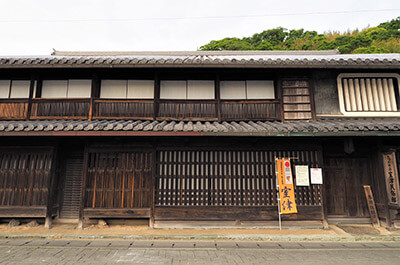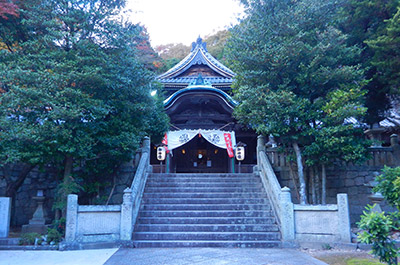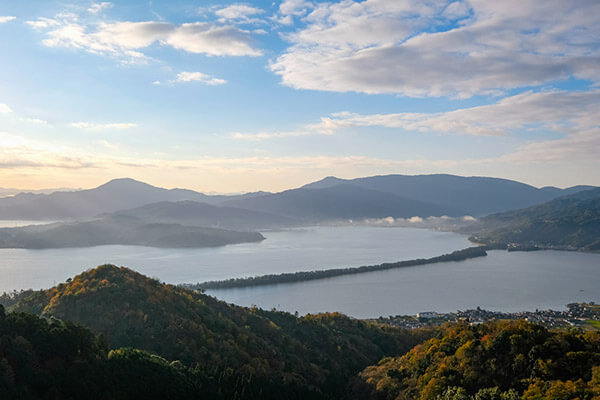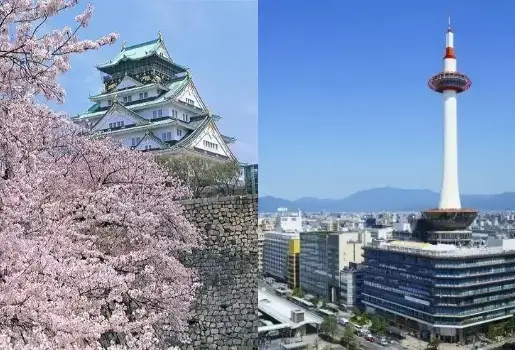STORY

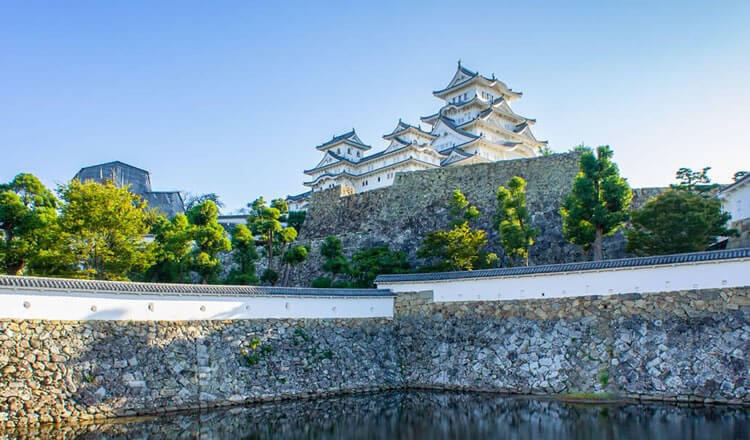
Harima—the frontline for battles during the period of turmoil and conflict
Harima is an area along the coast of The Sea of Harimanada in the southwestern part of Hyogo Prefecture. In ancient times, it became a key area connecting the Kinki region, where two of the capitals, Nara and Kyoto, are located, and the rest of western Japan both by the Sanyodo Road and the Seto Inland Sea routes.
When the Onin War started in the late 15th century over rival claims to find a successor to the Muromachi Government, it marked the beginning of The Warring States period. This brought years of turmoil to replace the long-maintained social order in Japan, and those with power continued attempts to expand their territory. Many warriors in the lower ranks overthrew their lords to take over the territory through battles, which was quite similar to how knights in the West dedicated their life to fight for their status. Militaries headed by leaders, such as Oda, Uesugi, Takeda, Tokugawa and Mori, were major examples of this throughout this period in Japan's history.
During the late 16th century, when the Dutch and the British were competing for control of global trade, which had previously been controlled by the Spanish Empire, Oda Nobunaga made his move to bring about national unification in Japan. After bringing the Kinki region under his control, his main goal was to consolidate a grip on power over the whole country by defeating the Mori clan who ruled western Japan. The Harima area was to be the main theater of military action for this and involved a large number of militias.
In response to Nobunaga's orders to take over the area, his subordinate Toyotomi Hideyoshi came to rule over Harima, with Himeji Castle at its center. Following this, he went on to defeat the Mori clan, resulting in the unification of the nation, with Osaka Castle as his base.
Later, when the Tokugawa clan defeated the Toyotomi clan and formed the Tokugawa government during the 17th century, the major issues for the Tokugawa were how to control the feudal lords that were allied with the Toyotomi side in order to defend themselves.
In an effort to achieve security in the area, castles and the towns they were based in were established in Amagasaki, Akashi, and Himeji, in addition to Osaka, along the Sanyodo road between Settsu and Harima. Furthermore, the heads of these domains like Harima were chosen from those warriors who were deeply trusted and loyal to the Tokugawa. In this way, the power of the Tokugawa was maintained for over 300 years by the warrior class of Harima.
Although the principles held by warriors during the Warring States period were mostly connected to the winning of battles, they did begin to form the loyalty they felt towards their masters and their own sense of honor and ideals into a kind of philosophy once the unification of the nation achieved. The following information details castles and areas in the Harima area, which were the location of many major battles between warrior forces during the Warring States and Edo periods. These places strongly represent the history and culture of the warrior class during these turbulent times.
Himeji Castle

Himeji Castle, one of the most prominent features of the Harima region, is a National Treasure, and is also known as Shirasagi-jo (white heron castle) due to its elegant, white appearance, reminiscent of a heron with open wings. It was also registered as a UNESCO World Cultural Heritage site, and the first in Japan. It was originally just a small castle built on a hilltop by the Kuroda clan during the Warring States period, but came to be recognized as a more important asset after Toyotomi Hideyoshi remodeled it as ruler of the area and made preparations to defeat the Mori clan.
Hideyoshi, once a lowly servant of Oda Nobunaga, rose to become the commander who ruled the Harima area, and his strategist Kuroda Kanbei helped him rise even further to take on the role of overall ruler of Japan. This is why Himeji Castle is also known as the castle of promotion. Heading north from this castle and up Mt. Shosha by ropeway, you will find Engyoji Temple, famous as a location for the Hollywood blockbuster movie "The Last Samurai" starring Tom Cruise. This is a famous place as a Hideyoshi's military position against the Mori clan.
During the Edo Era, this castle served as a stronghold for repelling attacks by warriors from the western territories. Its first lord was Ikeda Terumasa, with one of the later residents being Senhime, a granddaughter of Tokugawa Ieyasu. She was once married to Hideyoshi's son, Toyotomi Hideyori, who was actually an enemy of the Tokugawa family. She was rescued from Osaka Castle, which had been set on fire during the siege. Senhime later became the Princess of Harima. She brought 100,000 koku (1 koku is roughly equivalent to the amount of rice one adult generally eat in a year) when she moved in, and used funds from this extraordinarily abundant resource to add several buildings on the castle grounds, including Nishinomaru (the western bailey), the five-storied and six-floored Daitenshu (main tower), three Shotenshu (minor towers), and over 80 yagura towers. Certainly, the beauty of this castle complex can be largely accredited to the exemplary esthetic sense of this cultured female resident.
Over time, the castle lords here were replaced with some frequency before the Sakai clan came to rule it for 120 years until the late 19th century, when modernization of the country was in progress.
Since its very establishment, Himeji Castle has never experienced damage through disasters or war. It was fortunate to survive World War II even when the surrounding area was almost completely destroyed, and the Hyogo Prefectural Museum of History, located to the north of the castle, provides more detailed information about this and the history of Himeji Castle itself.

Arioka Castle
Arioka Castle was established by Araki Murashige, a subordinate warrior of Oda Nobunaga, after he took Itami Castle during the Warring States period. Although he had been working alongside Hideyoshi on ruling the Harima area, he suddenly betrayed him and sided with the Mori clan in a revolt against Nobunaga. Hideyoshi's strategist, Kuroda Kanbei, was dispatched to Arioka Castle to persuade Murashige to return to the fold, but he chose to imprison Kuroda instead. Eventually, Kuroda was rescued, and gained recognition as a true warrior, which resulted in him rapidly climbing the career ladder under Hideyoshi. After ten months under siege in the castle, Murashige was finally defeated by Nobunaga and the castle was razed to the ground. After Nobunaga's death, he undertook a curious and somewhat unusual career change ending up serving Hideyoshi as a master of the tea ceremony.
Although many of those related to Murashige were also killed, his son Iwasa Matabei survived and went on to become a quite creative and successful painter in the Edo Period. The Arioka Castle site is now a community park, located next to JR Itami Station.
Amagasaki Castle
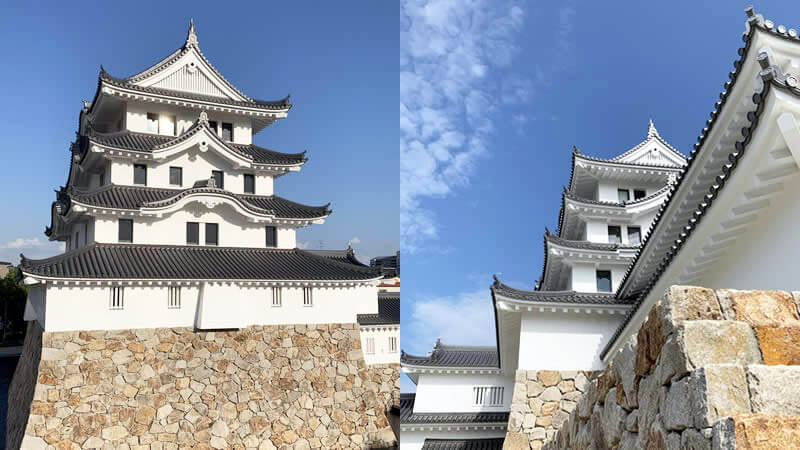
Amagasaki Castle was established in 1617 by Toda Ujikane, a warrior who fought at the Battle of Sekigahara and the Siege of Osaka, and served as a defensive castle in western Japan under orders of the national government. This was a huge castle located by the sea, with a four-story main tower. Its size is a very good indicator of how much the government considered the Amagasaki area of real importance. The castle town was also developed in tandem with the construction of the castle.
The Amagasaki Domain was one of the richest at the time, and its territory extended over quite a large area, which would have included present-day Takarazuka City, Nishinomiya City, Itami City and part of Kobe City, in addition to Amagasaki City. It also incorporated brewery districts in Nishinomiya and Nada.
The castle, including its stone walls, was dismantled during the Meiji period. However, a replica of the main tower was created in front of Amagasaki Station through a generous donation made by a wealthy citizen in 2018. There is currently a museum inside the tower and visitors can take a trip back in time through an experience in the VR theater here.
Akashi Castle
From the platform of JR Akashi Station, you can see the beautiful Akashi Castle Remains to the north. There is a 20 m high stone wall stretching 380 m from east to west, and two three-story white-walled towers on both sides. Once you get to the remains, you can enjoy a magnificent panoramic view of the Akashi Straits and the Akashi Kaikyo Bridge.
Akashi Castle was established in 1618, just like Amagasaki Castle as a defensive castle to resist attacks from the feudal lords of western Japan. It was built by Ogasawara Tadasane, who fought in the Siege of Osaka along with his father and brother.
The layout of the castle town here is believed to have been designed by, among others, Miyamoto Musashi. He was a famous swordsman who wrote "Gorinsho" a treatise on the martial arts, and is also known as the main character of the Japanese comic book "Vagabond," whose translated version is very popular around the world. Some parts of present-day Akashi City still retain certain features of the time in their layout, including the Uonotana Fish Market, which was once called Higashiuo-cho (literally "east fish town") when the castle was constructed. This market is well known as a place to buy the freshest seafood, such as octopus and seabream, which are harvested locally. The Akashi City Museum of Culture offers detailed information on the history of Akashi Castle and its castle town.
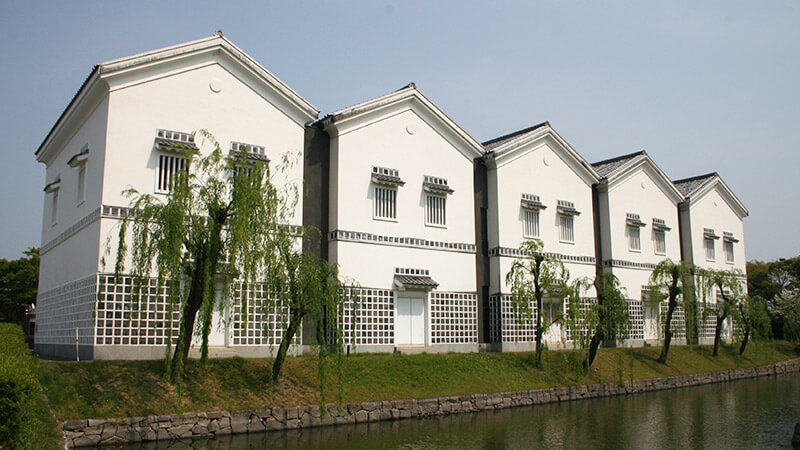
Ako City
Ako City has a lot to offer in the way of stories that detail the warrior spirit and culture. In 1701, the head of the Ako Domain, Asano Naganori, drew his sword against his advisor, Kira Kozukenosuke, and was thereafter sentenced to commit seppuku suicide, which led to the entire Asano family being stripped of its status. In such cases, both parties were usually punished, but Kira was found to be without blame. After this, Naganori's principal counselor, Oishi Kuranosuke, worked to regain the status of the family, but, despite his best efforts, eventually failed. One year later, Oishi and 47 ronin retainers struck back at Kira's home in an attempt to avenge the name of their lord. This was to be known as the "Ako Incident," which resulted in the 47 warriors being sentenced to seppuku. This incident was made into a story called "Chushingura" and has since been performed in both bunraku and kabuki formats. On December 14 every year, a festival called, Gishi-sai, is held to celebrate the bravery of these 47 warriors of the Ako Domain, and attracts a large number of visitors to the city. This story was made into a movie in the U.S. under the title of "47 Ronin."
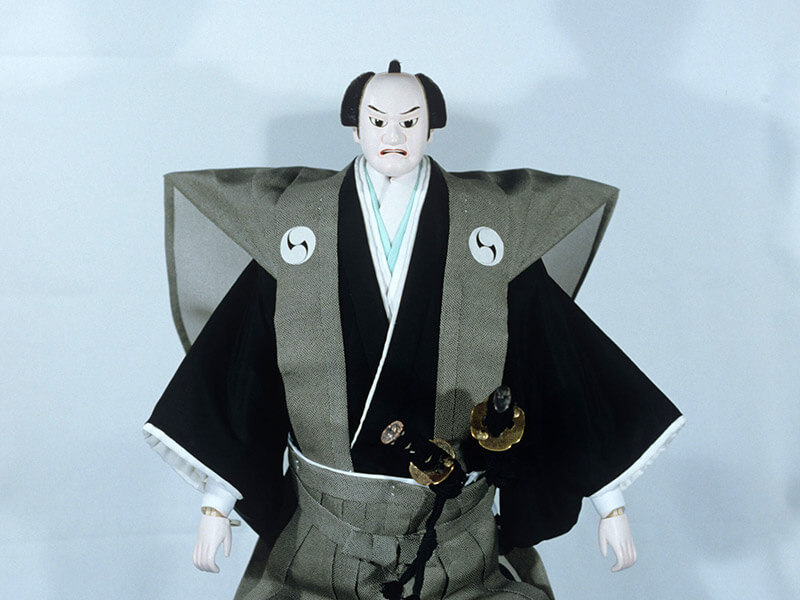
Ako is also well known for its locally produced salt. Rock salt is common in Europe, but sea salt produced from seawater through evaporation and crystallization is more usual in Japan. In Ako, due to the sand on a river delta on the Seto Inland Sea and the perfect level of gap between tides, the salt field system here was developed with the channeled salt-terrace method for seawater, making the area one of the top salt producers in Japan. Detailed information on salt production as well as the Ako warrior class is readily available at the Ako City Museum of History near Ako Castle.
Tatsuno City
In ancient times, Tatsuno played a key role in connecting traffic between the Sanyo and San'in regions, and was also an important military base. It is believed that Tatsuno Castle was established on a mountain during the 15th century. The Wakisaka clan lorded over the Tatsuno Domain, which was quite small resources of just over 50,000 koku. Despite its small scale, it managed to earn the trust of the government and produced some important people who served for the Edo Government in high-ranking positions such as Jisha-bugyo and Roju.
One of the most important features of Tatsuno's history is the locally produced soy sauce, an industry that has continued for over 400 years to date. The western area of the Ibo River is called Harima's Kyoto due to its beautiful traditional landscape featuring town houses and soy sauce warehouses.
You can find a huge map of the Tatsuno Domain during the Edo Period just after you enter the Tatsuno Municipal History and Culture Museum inside the castle. The current layout of the town is not so different from that in this map, so you can enjoy a stroll in the town and feel as if you are travelling back in time. During the Edo Period, the Wakisaka clan managed its domain very well and brought much wealth to the area. The historical background of this city may well have been behind the local culture here, which produced some famous intellectuals following the Edo Period, including the philosopher Miki Kiyoshi and the writer Miki Rofu.

The Harima area certainly experienced centuries of turbulence, and its castles and their towns bore witness to the many stories and exploits of a famed warrior class. During the Warring States period, anybody, even a peasant's son like Hideyoshi, could rise up and seize the opportunity to overthrow those of a higher position and go on to rule the nation. However, during the Edo period, under strict supervision by the Edo Government, warriors dedicated their lives to the lord of their domain, who were the de facto administrative heads of each division. In this area, there were 14 domains, including the Himeji Domain, and each strived to survive through the development of different industries. In this way, the lords maintained the financial health necessary to reign over their people. The time of the warrior class is long over, but their example of loyalty and dedication has continued to live on in the spirit of the Japanese people.
